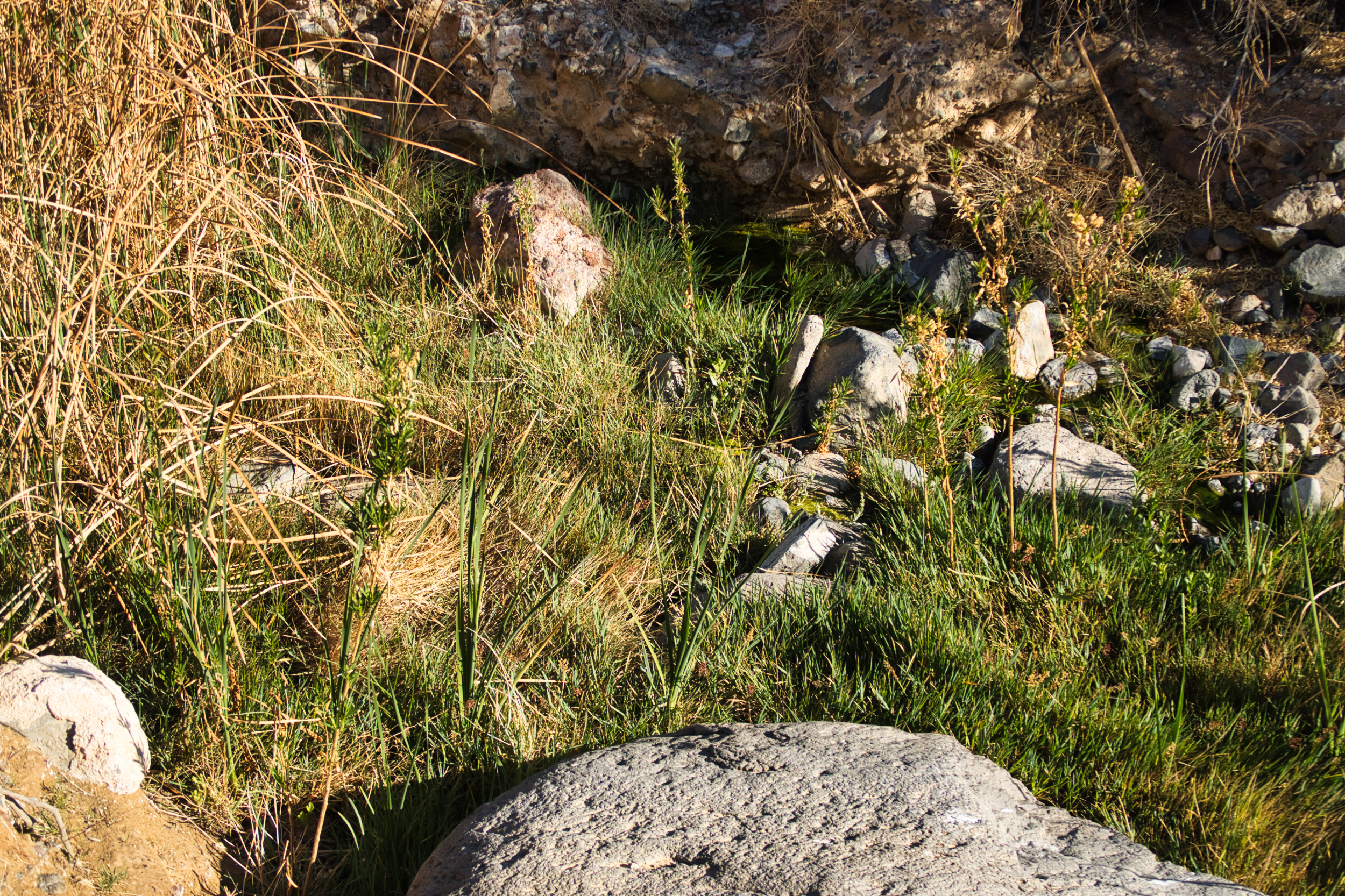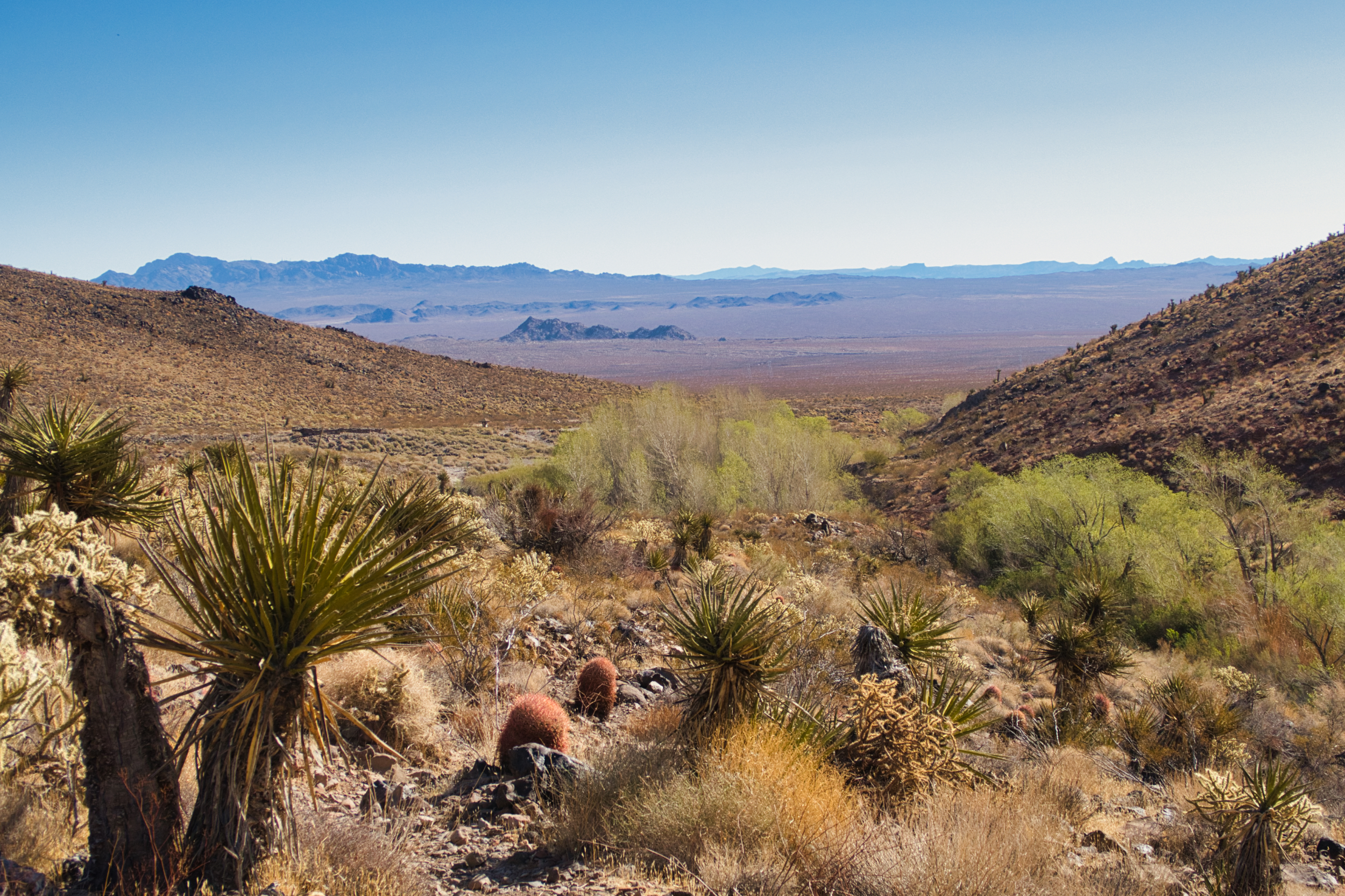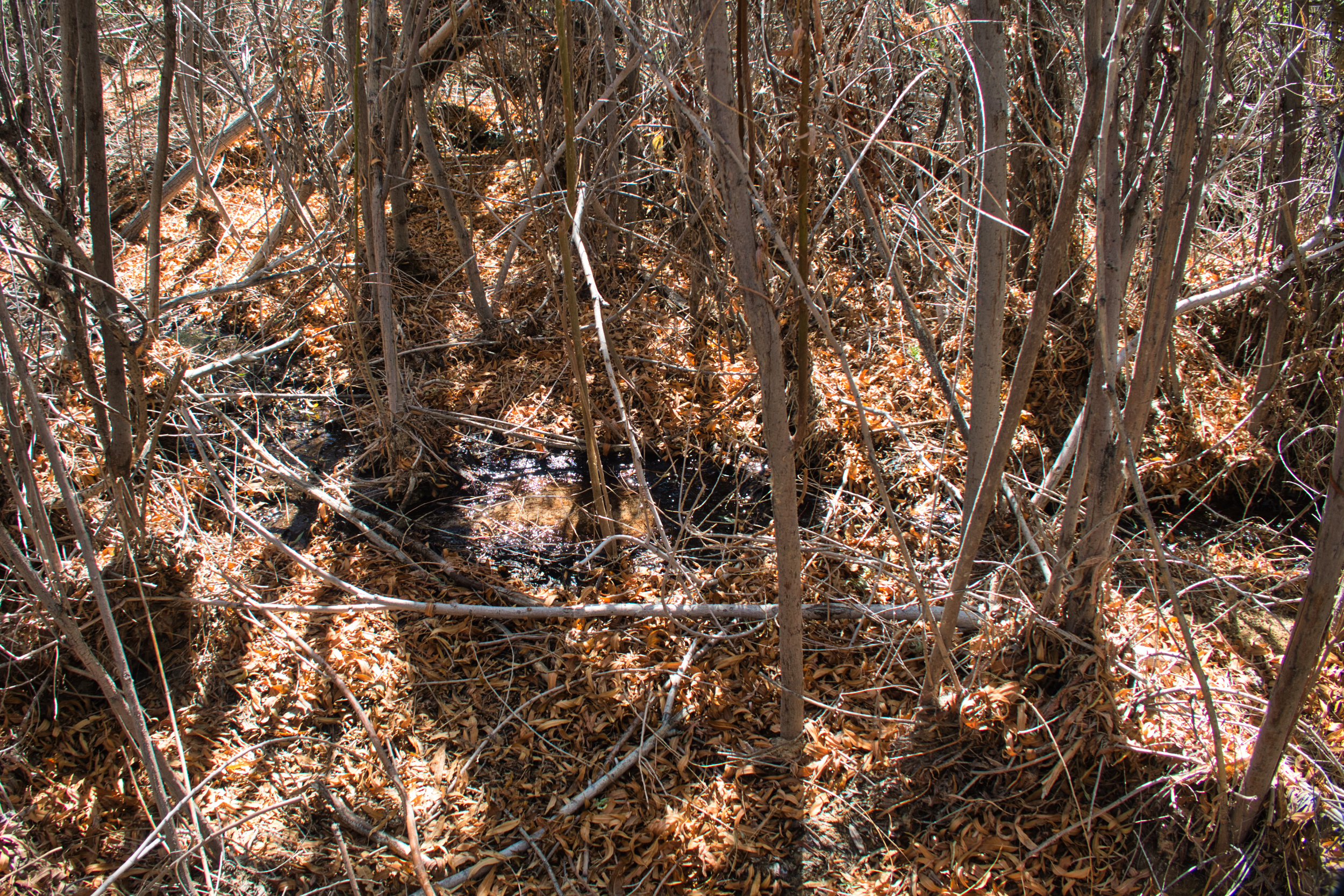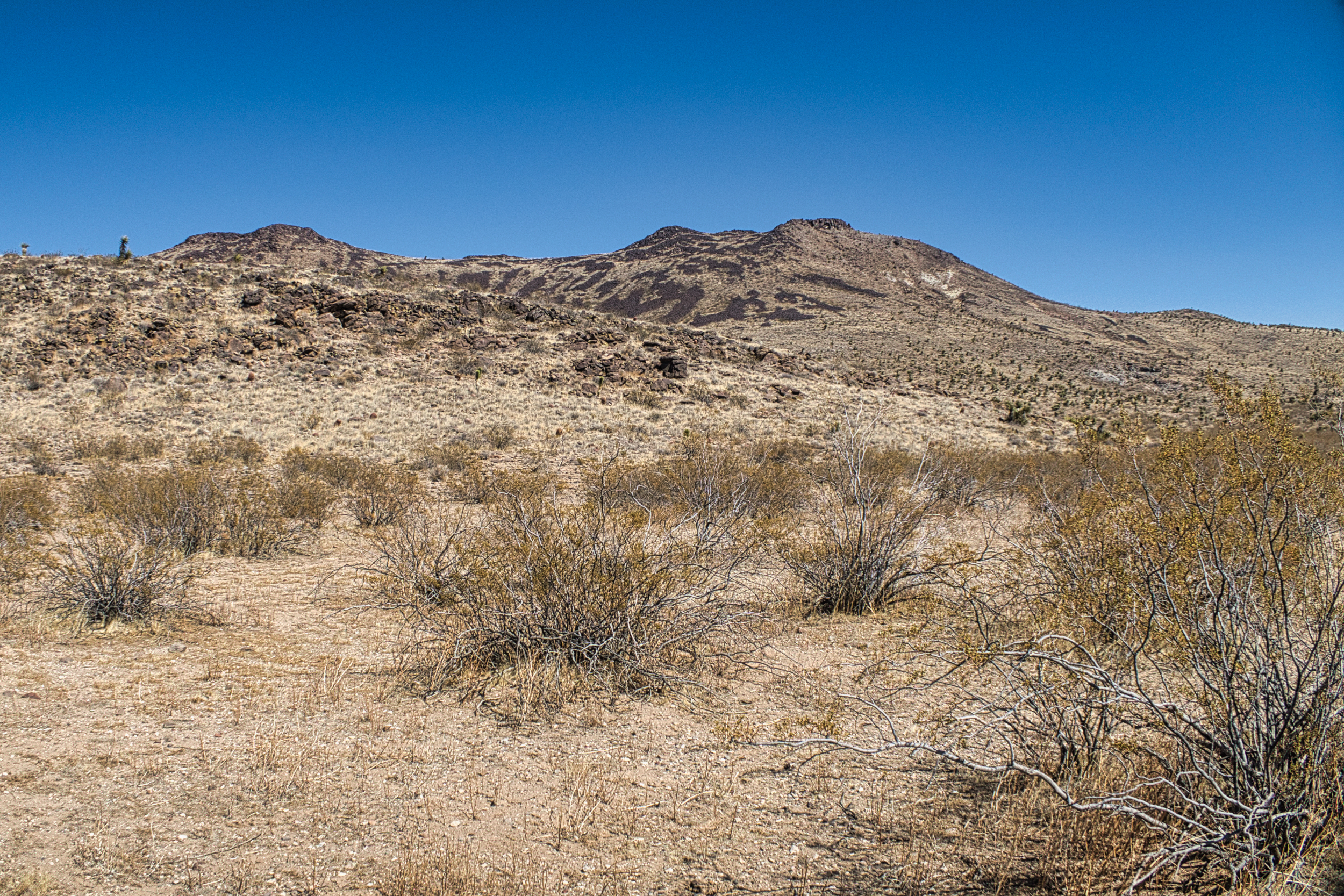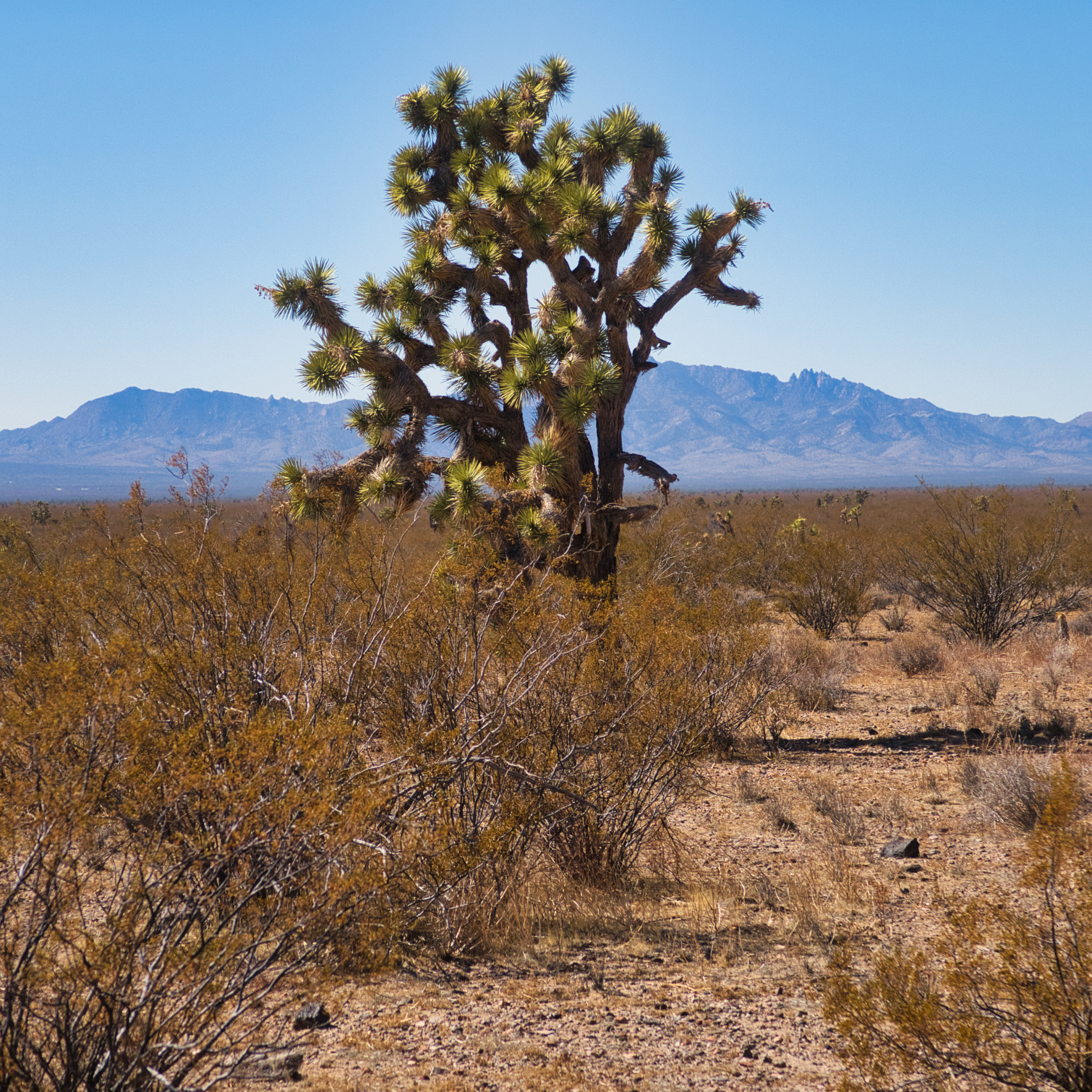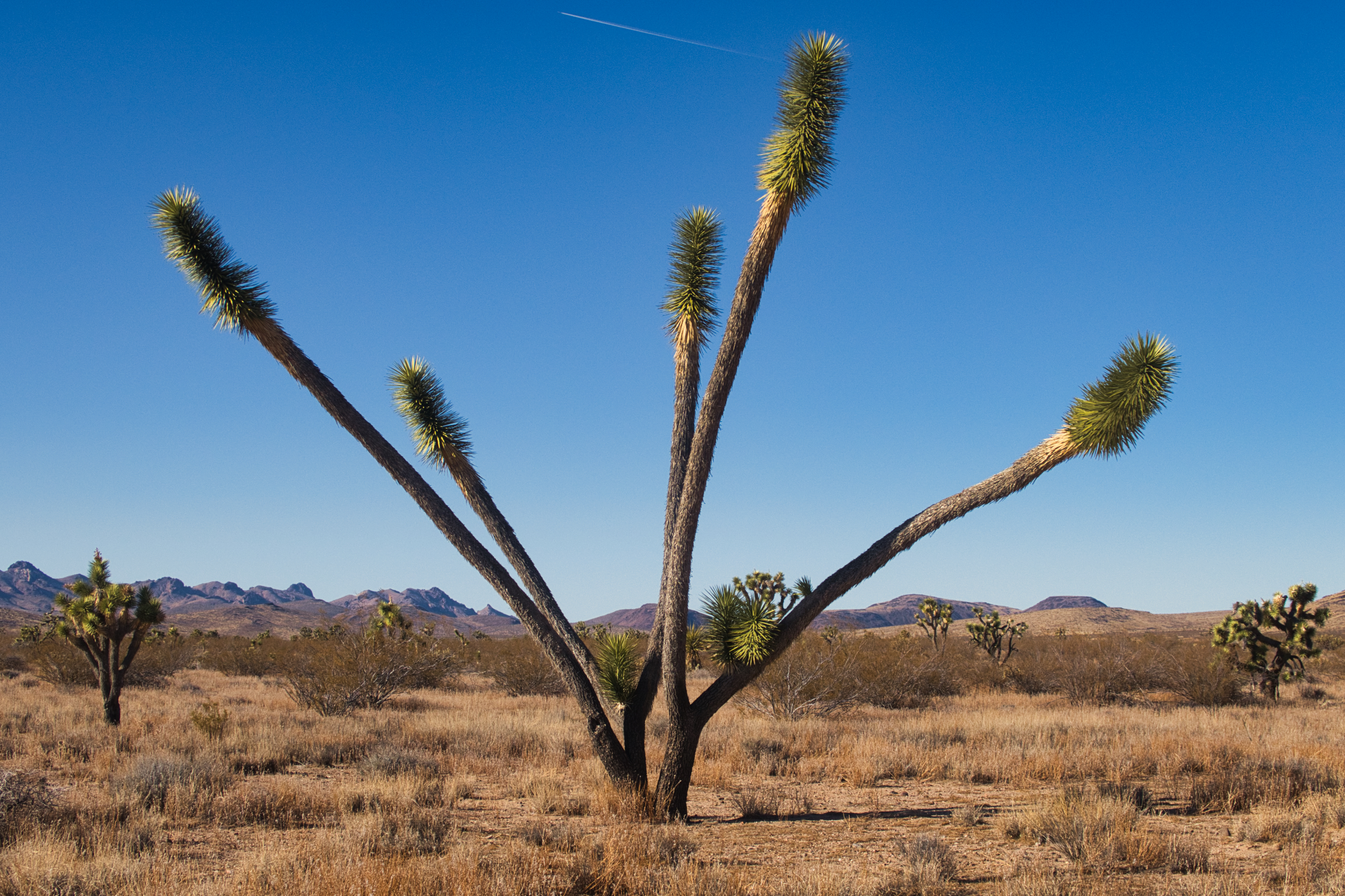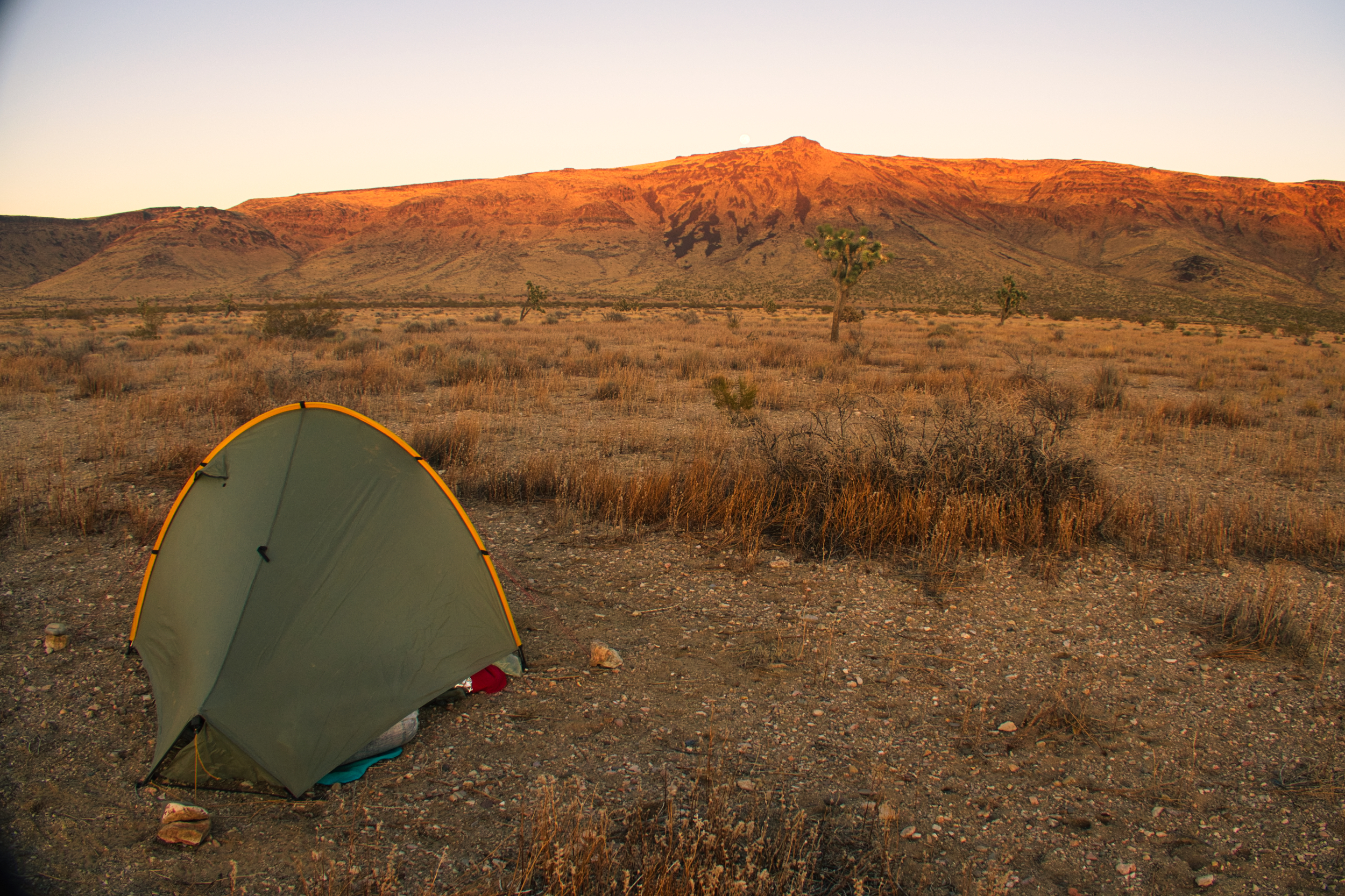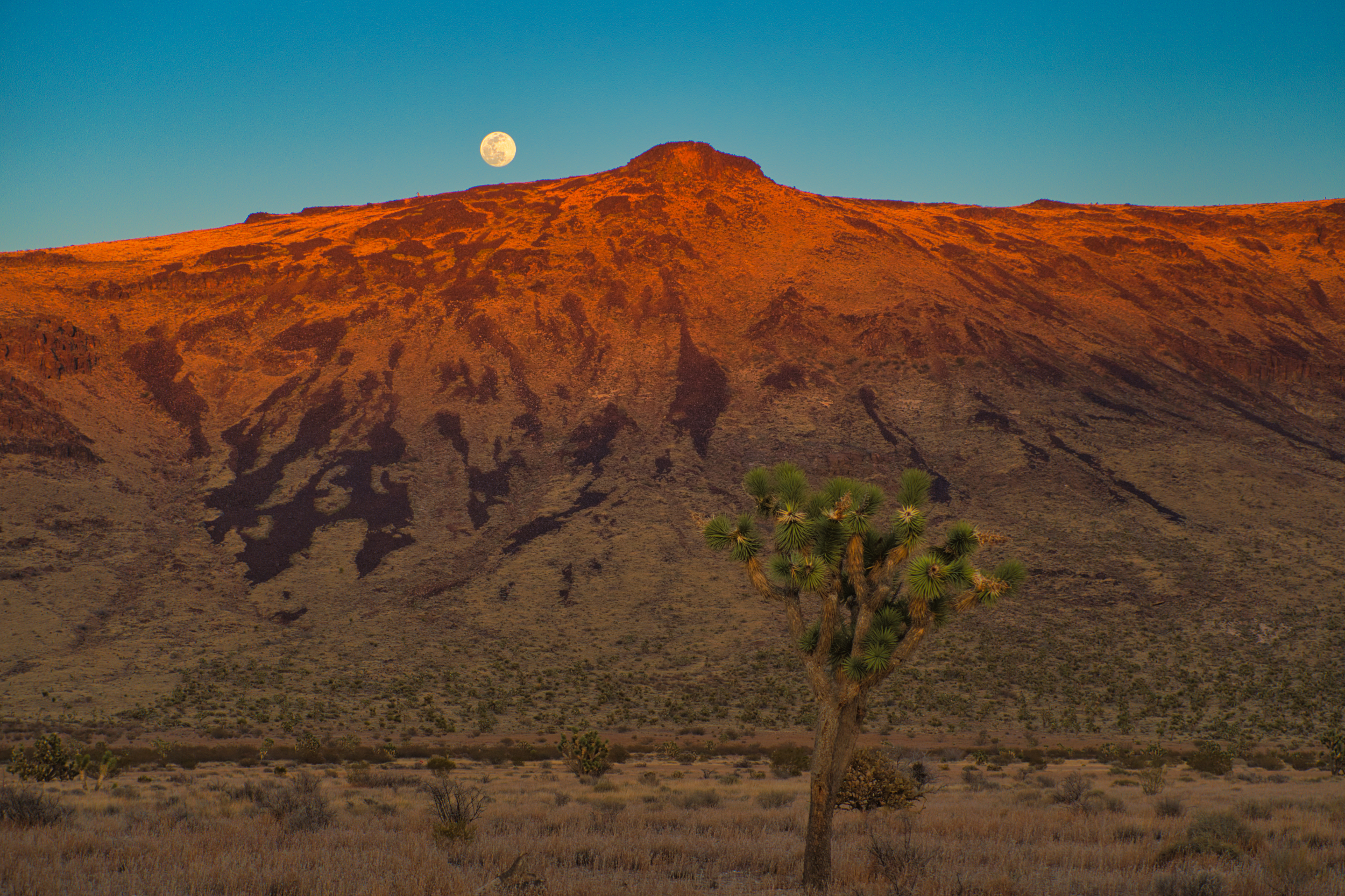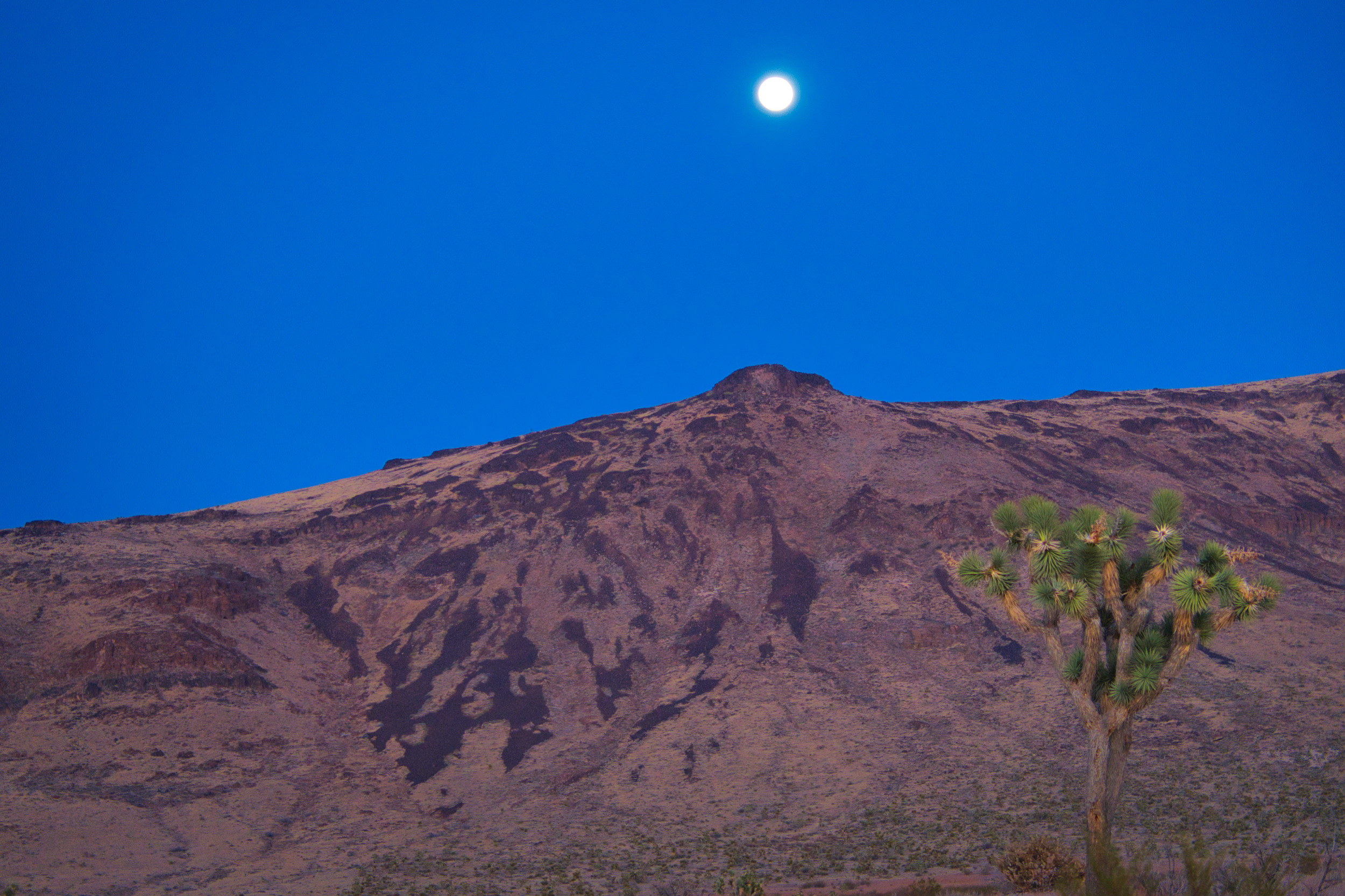The wind slacked off after midnight then picked up again at dawn.
It has been cold and relentless on this trip, probably driven by a high pressure cell in the Pacific that is also driving storms east and leaving the Mojave brown and barren in what should be its time of greening.
After a dry winter last year, an exceptionally hot and dry summer and then another dry winter the vegetation is devastated. Nearly all the perennial plants – the saltbrush, the rabbitbrush, the ephedra, the jojoba – are gray and brown and apparently lifeless. Even the creosotes, which can sink their roots a hundred feet down and live for thousands of years, even the creosotes are more brown than green. Only the cacti and yuccas provide splashes of green amid the gray sea of withered plant life.
My plan today was to loop around the southern end of the Piute Range to its east side, climb to its crest via Piute Creek and then follow the crest north. Per the topo maps, the first few miles of the crest would be rugged but then would level out to a high plateau where I could camp.
Ridgewalks like this are the kind of hiking I like best: open views of the desert for miles in every direction, the world laid out below like a map.
I traveled north over broken basaltic rock fields at the foot of the range, then met up with the Mojave Road, an old emigrant trail that linked reliable water sources into a viable route across the desert.
Paiute Creek issued forth from a cleft in the range, its thin layer of flowing water supporting a bottoms of willows and cottonwoods just now greening up. I even got my feet wet crossing the soggy bottomland.
There is an old stone fort here and I stopped at its ruins and read the sign saying that the water comes from the Lanfair Valley via a fault. So the creek water is essentially fossil water that fell to the west years or decades or centuries ago and is only now making its way back to the light.
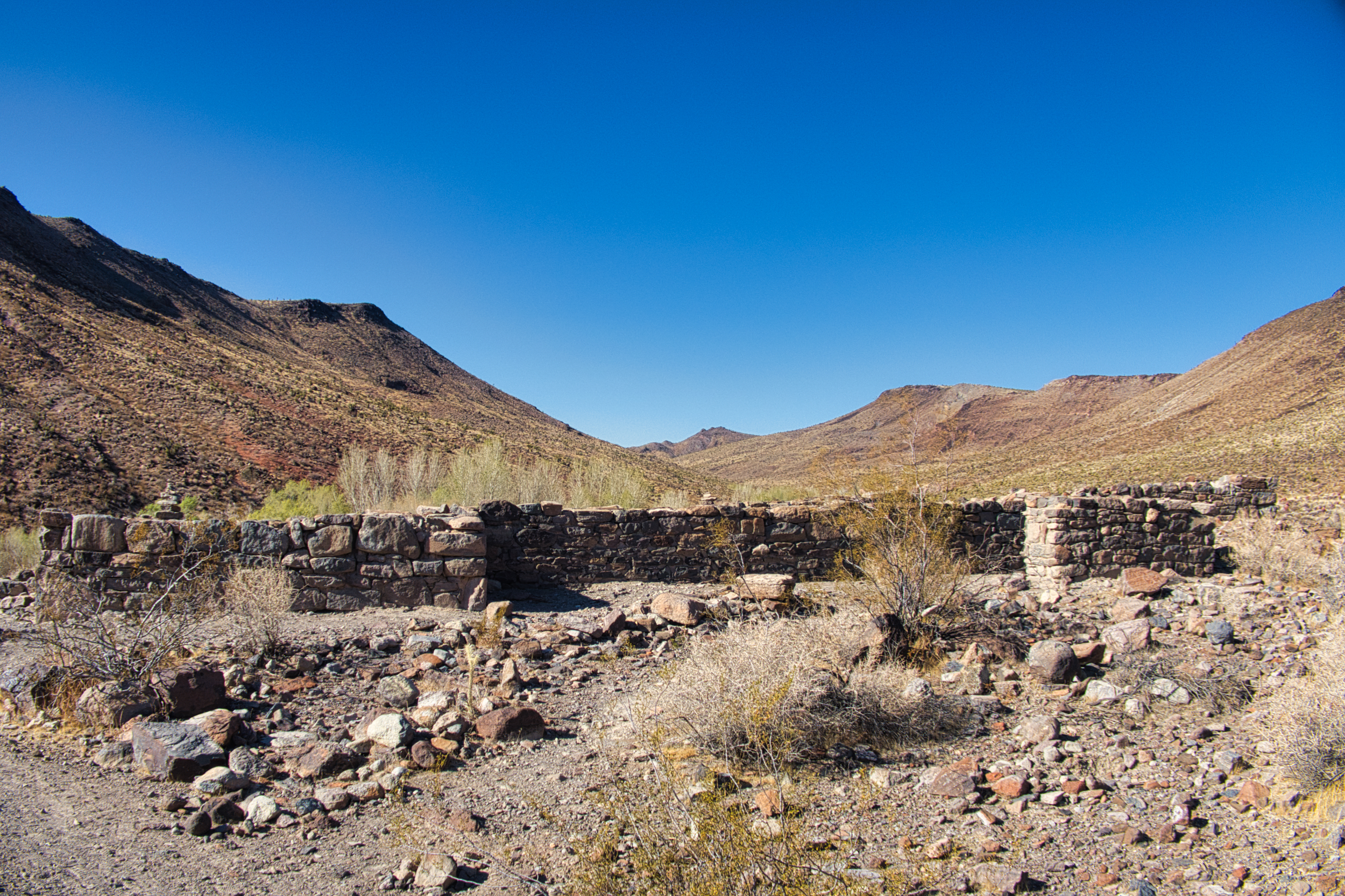
What’s left of Fort Mojave, built to last but apparently occupied for only a few months in the 1880s
I should have taken heed but instead broke the first rule of water in the desert: when you find water, take it. I assumed there would be water at Piute Spring 600 feet higher (i.e., above the level of the Lanfair Valley) and thought to spare myself carrying 7 L up to it. There was even a trail up to the spring. It wasn’t well maintained, but it was better than the bushwhack I had anticipated, and I felt myself to be in luck on the steep climb up.
Until I got to the spring which of course was dry.
There was nothing for it but to walk a mile back down to the creek and scramble down the steep slopes of its upper canyon and thrash through the willows to find a trickle I could scoop water out of and filter through my bandanna.
I hadn’t taken a morning break and it was near lunch time. I wasn’t feeling very hungry and so only had a few nibbles of trail mix before saddling up my heavy pack to begin working my way up the rocky gulch to the crest of the range.
What I saw there made my heart sink. The crest was composed of rough bare bouldery basalt. I could hike (more like climb) it, but it would be dangerous and I would have to go slowly and carefully as my pack was heavy and the wind was howling. It was getting late. There would be several miles of very rough travel, and no likely place to camp. With cliff bands on either side of the crest, there would be no good places to bail out either.
Going for it began to seem like one of those wilderness disaster case studies where one wrong decision (like not getting water at first opportunity) triggers another, leading to some very bad outcome.
I was on a broad saddle and so elected to bail out to the Lanfair Valley to the west. I could walk the flat valley paralleling the range and rejoin my planned route at its northern end.
My appetite returned as soon as I made the decision, and I stopped and had lunch.
The rest of the day’s hike was unremarkable except for the appearance of the first Joshua Trees on my route.
However, the sunset and moonrise were spectacular. I was glad to be enjoying them in a dusty but comfortable camp on the desert floor, and not to be stuck in a rocky crevice up on the crest.


